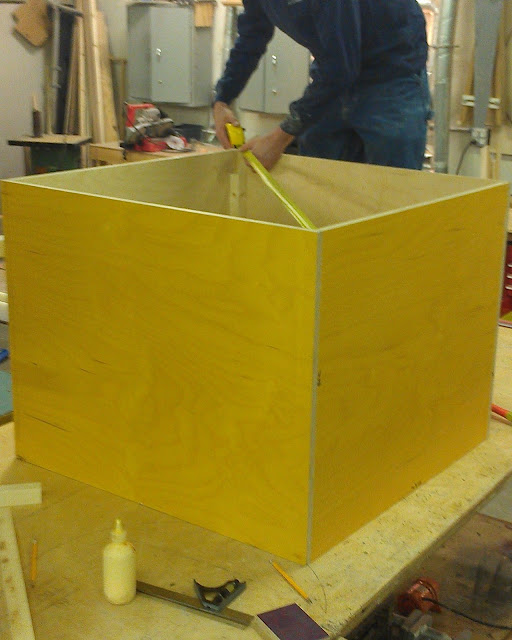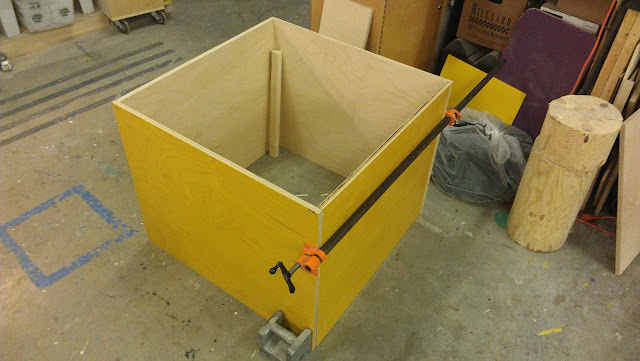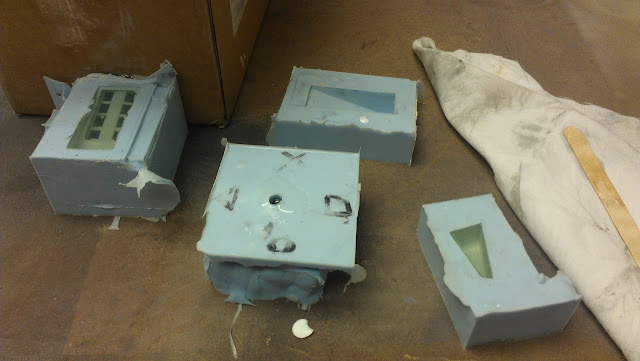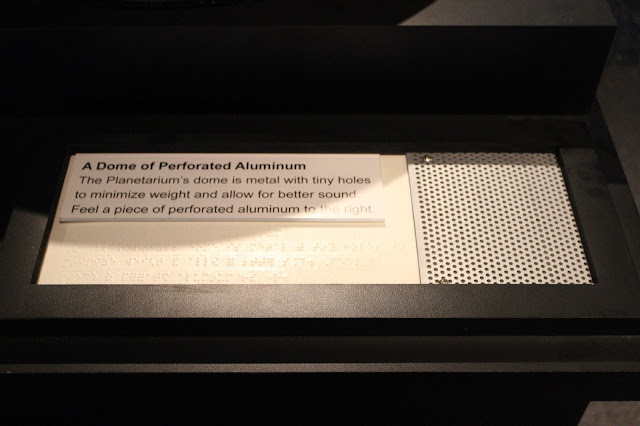Time flies! I apologize for the hiatus in posting and appreciate your patience; between finishing up the major parts of the program, preparing for and carrying out the 50th Anniversary of the Planetarium Celebration Week and finishing my Masters degree this poor little blog slipped through the cracks. I've got some great (in my opinion) updates for you all though!
Building accessible and durable casework took a bit of planning but it was worth it.
 |
| The casework starts coming together |
 |
| A box is formed |
 |
| The top is made |
 |
| Casework being assembled |
 |
| Applying adhesive to the back of the black laminate |
 |
| The black laminate is applied to the wooden casework |
 |
| The black laminate is is trimmed to size |
 |
| The Planetarium's walls are prepared for paint |
Once the casework was built and the walls of the Planetarium ready and waiting for the dome to arrive, it was time to continue figuring out how to cast our mini Zeiss. The process required the creation of a positive which was then submerged in the silicon material that would solidify to become the mold.
 |
| Making the Mold |
When the positive is removed, the mold is ready to use, at which point the casting can begin. The casting liquids are mixed and poured into the mold where they set as hard as a rock, creating the model.
 |
| The Model is Poured and Cast from the Molds |
It took a few tries as you may have seen in previous posts...
 |
| Half of a Zeiss StarBall |
In the end though, the final product turned out great.
 |
| Success for the Planet Projectors! |
Around the time the casting was wrapping up was when the dome finally arrived. It came clear and cut in half as we desired. A map of the Northern Hemisphere's night sky when fall is turning to winter was printed out and I drew the constellations on the dome with Sharpie. Ian was then able to drill holes where the stars (painted rivets) would go.
 |
| The dome gets mapped |
The dome was then painted black and many rivets of different sizes were painted white (with a blue one for Sirius, an orange one for Aldebaran and a red one for Betelgeuse).
 |
| Holes for the stars are drilled and the dome is painted black |
The rivets turned stars were then cemented into the previously drilled holes in the dome, creating the tactile stars.
The exhibit text also had to be created at this time. The text needed to be descriptive and explanetory, but also concise so that both the large print and Braille would fit. Our wonderful volunteer, Deb,created all the Braille we needed from the text I wrote. Ian then took the Braille and created mold and cast our exhibit panels with the Braille on it.
 |
| The mold for the Braille exhibit text is made |
Mr. Smith very kindly helped us get the printed text set up to be back printed on no-glare plex.
 |
| Exhibit text explaining the Zeiss Star Projector |
 |
| Exhibit text explaining the purpose of the model |
 |
Exhibit text explaining the constellation
|
 |
Exhibit text about the dome
|
It was then time to assemble everything.
 |
The casework gets spruced up for its opening
|
 |
Some assembly required...
|
 |
The dome is secured
|
 |
Ready for my close-up!
|
 |
Waiting for its first visitors to arrive!
|
Words truly cannot express how excited I am about how well this turned out in the end. It seems just like a mini version of the real StarBay and Zeiss Projector! So many people brought it to life. I have to give huge thanks to Lighthouse for the Blind Saint Louis for generously funding the project. A big thank you to Dave in Electronics, Chris in Production, Justin for your advice, Pete and Thom for you extra hands and help, and Mr. Smith for your advice and help as well. Deb, so much thanks goes to you for your consulting, your advice and all the Brailling you did. Finally, thank you Ian. When I told you my idea and gave you the drawings for this exhibit, I never guessed it would turn out even better than I could have imagined. You brought this model to life.
Since the model has gone on display, visitors who are blind or have low vision and visitors with sight have both explored the model with their hands, prompting questions from children and adults alike about the Planetarium as well as Braille.
























No comments:
Post a Comment